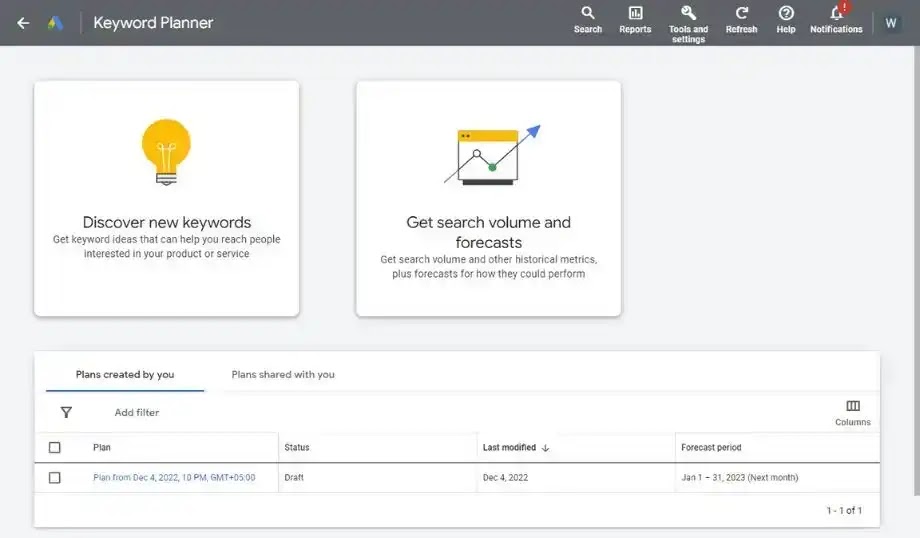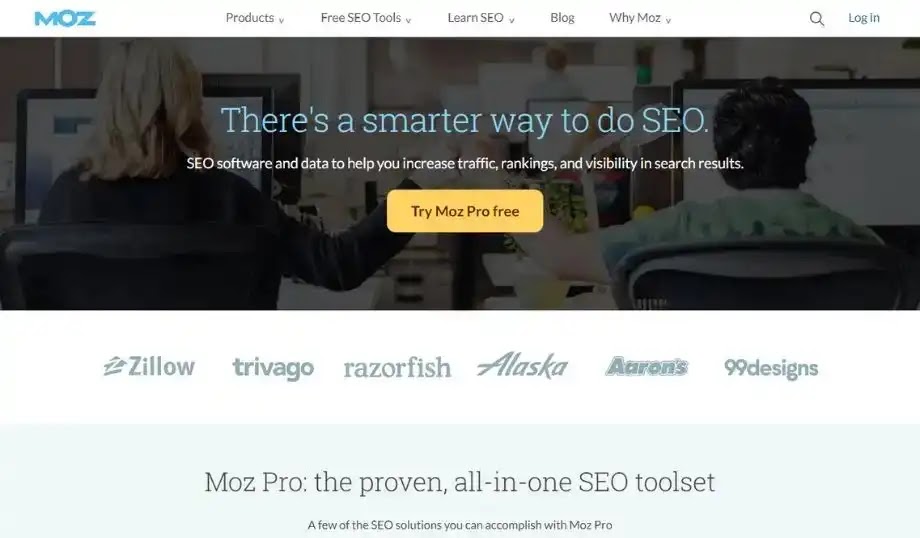Google My Business Profile, has emerged as a crucial resource for companies trying to acquire a competitive edge in their local market. You must make sure your profile as an interior designer is interesting. This thorough tutorial on How to Optimise Your Google My Business Profile for Local Interior Design will give you priceless insights, recommendations, and methods to assist you in realising the full potential of your GMB profile.
As we dig into the complexities of profile optimisation, covering everything from learning the foundations to utilising powerful features meant to boost your business in the local market, be ready to go on a journey that will revolutionise your online presence. You will discover how to make your GMB profile stand out while luring clients who can take your interior design firm to new heights. This is done with a focus on compelling images and a painstakingly constructed approach. The moment has come to take the chance and leverage Google My Business's capabilities for the success of your interior design business.
{getToc} $title={Table of Contents}
Learning the Fundamentals: Creating Your Google My Business Profile
In this context, we will review the fundamentals of creating your Google My Business page for local interior design. We will walk over how to create or claim your listing, pick the best company category, provide precise contact information and business data, and submit high-quality photographs of your work to demonstrate your talent and originality.
- Establishing or claiming your Google My Business profile
- Choosing the appropriate company category
- Entering precise contact and business information
- Oploading crisp photos of your work
Establishing or claiming your Google My Business profile
Claim your current listing or make a new one as the first step in optimising your Google My Business (GMB) profile for local interior design. Visit the Google My Business webpage and follow the instructions to sign in or register to do this. Once signed in, check your company to see whether a listing is available. If so, take ownership of it; if not, start over.
Choosing the appropriate company category
The most important step after claiming or establishing your GMB listing is to choose the most appropriate company category. This aids Google in comprehending your company and displaying it in pertinent search outcomes. The most appropriate category for interior designers is probably "Interior Designer," but if you provide more services, take into account other relevant categories like "Furniture Store" or "Home Decor."
Entering precise contact and business information
It's time to provide precise business data and contact information now that your GMB listing has been claimed and categorised. Make sure the information about your company is current and consistent across all online channels, including the name, address, phone number, website, and operating hours. This improves your local SEO and makes locating you simpler for potential customers.
Uploading crisp photos of your work
In the interior design field, aesthetic appeal is crucial. By adding high-resolution photographs of your work to your GMB profile, you can highlight your knowledge and creativity. Include various images showcasing diverse initiatives, fashions, and space kinds. Don't forget to alter your cover photo and profile to fit your brand identity. You may stand out from the competition and leave a lasting impression on potential customers using high-resolution photographs with the right lighting and composition.
Increasing Visibility: Google Maps Ranking Strategies
This article will examine numerous tactics to increase your exposure and place higher for local interior design searches on Google Maps. We'll go over how critical it is to solicit and respond to client testimonials, frequently update your profile with interesting posts and promotions, take advantage of Google My Business tools like Q&A, Messaging, and Bookings, and effectively use local keywords in your profile description and posts to target local customers.
- Encouraging user evaluations and responding to them
- Refreshing your profile with content and promotions regularly
- Using the tools in Google My Business: Bookings, Messaging, and Questions
- Including regional keywords in the body of your articles and profile descriptions
Encouraging user evaluations and responding to them
Customer testimonials greatly raise your Google Maps position since they imply reliability and authority to both Google and future customers. Kindly request that happy customers leave evaluations on your GMB page to promote reviews. By giving a direct link to your review page, you can make it simple for them.
It's crucial to reply to evaluations, both favourable and bad. Professional replies that show you care about client satisfaction might assist in softening any unfavourable criticism. This interaction with your audience also gives prospective customers insightful information, further strengthening your online reputation.
Refreshing your profile with content and promotions regularly
Since Google encourages active GMB accounts, updating your profile with pertinent information is critical. Add updates to your GMB page about your most recent initiatives, promotions, or business news to keep your audience interested and informed. This constant activity informs Google that your profile is up to date, which may improve your position on Google Maps.
Using the Q&A, Messaging, and Bookings capabilities of Google My Business
Many tools are available in Google My Business to help you distinguish yourself from rival businesses and interact with potential customers. Use the Q&A section to address frequent queries regarding your offerings, and be sure to watch for and swiftly respond to any new requests. You may interact directly with potential customers using the messaging tool to offer individualised support and build deeper connections. Finally, consider using the Bookings function to display your availability and improve appointment scheduling.
Including regional keywords in the body of your articles and profile descriptions
Using local keywords wisely in your GMB profile description and content is essential for attracting local customers. Look for relevant search terms that potential customers in your location could use, such as:
- "[Your city's] interior designer,"
- "[your city's] interior design services,"
- "[your city's] home furnishings"
These regional keywords can increase the visibility of your profile in regional search results, putting you in contact with people looking for interior design services nearby.
Showcasing Your Portfolio: Making a Lasting Impression on Potential Clients
The greatest methods for exhibiting your portfolio to leave a lasting impression on potential clients will be covered in this article. We will discuss how to effectively market your interior design services and differentiate characteristics to stand out in the crowded market. This includes sharing success stories and client testimonials to establish credibility.
We will also discuss organising your images by room type or design style.
- Selecting a variety of project images
- Sorting your photos according to room types or design motifs
- Sharing success tales and endorsements
- Highlighting your interior design expertise and differentiators
Selecting a variety of project images
In the interior design sector, recruiting new clients requires a strong portfolio. By choosing a variety of project photographs for your GMB profile, you can highlight your abilities and adaptability. Include pictures showing:
- Different design motifs (eclectic, classic, modern, etc.).
- Many rooms kinds, including living rooms, kitchens, and bedrooms.
- Where applicable, commercial and residential constructions.
Your capacity to accommodate varied customer preferences and project objectives is demonstrated through a well-rounded portfolio.
Sorting your photos according to room types or design motifs
Organise your photographs by room type or design style to improve the user experience and make it simpler for potential clients to explore your portfolio. Visitors may easily access ideas and examples pertinent to their needs. Think of making distinct albums or galleries for:
- family rooms
- Kitchens
- Bedrooms
- Bathrooms
- Outside areas
- commercial endeavours
Alternatively, you may arrange photos according to different design philosophies, such as modern, classic, minimalist, or industrial.
Sharing success tales and endorsements
Client endorsements and success stories give your business more credibility and have a big impact on the decisions of new clients. Share these tales on your GMB profile and provide information like:
- Individual requirements and preferences of the customer.
- The difficulties you ran across with the design and how you overcame them.
- The result and the client's comments.
By including endorsements and success tales in your profile, you humanise your company and assist potential customers in imagining your services' effects on their environment.
Highlighting your interior design expertise and differentiators
Finally, on your GMB profile, express your interior design services accurately and showcase your USPs. You might have the following USPs:
- A particular speciality or style of design.
- Knowing a certain project or clientele.
- Additional services, including sustainable design options or bespoke furniture design.
By skillfully marketing your services and USPs, you may set yourself apart from the competition and draw in consumers looking for your particular area of expertise.
By practising these techniques, you may optimise your Google My Business page for regional interior design and draw local customers' attention. Watch your interior design company expand as you remain steadfast in keeping a solid web presence.
Conclusion
Optimising your Google My Business page for local interior design is essential to improve your online visibility and draw in more customers. By learning the fundamentals of creating your profile, increasing your visibility on Google Maps, displaying your portfolio, and advertising your specific services, you can interact with potential customers and expand your business.
Never forget that consistency is the key to success. Create engaging updates, fresh project photographs, and promotions for your profile regularly. Additionally, you must communicate with your audience by posing queries, posting evaluations, and sending messages. As you polish and optimise your Google My Business page, you'll be better positioned to draw in local clients and stand out in the crowded interior design market.
It's time to take action and grow your interior design business now that you have the information and techniques to enhance your Google My Business page.
Questions and Answers (FAQ):
Why is it necessary to optimise your Google My Business page for local interior design?
A1: Improving your online visibility, attracting local clients, and enhancing your local SEO are all benefits of optimising your GMB profile.
How can I improve my local interior design search ranking on Google Maps?
A2: Encourage client testimonials, often update your profile with updates and offers, take advantage of GMB capabilities, and employ local keywords.
What photos should I upload to my Google My Business interior design profile?
A3: Use high-quality photographs of your work that showcase numerous projects, design aesthetics, room kinds, and commercial and residential environments to highlight your accomplishments.
How can I use Google My Business features properly for my interior design company?
A4: Use tools like Q&A to respond to queries, Messaging to facilitate direct communication, and Bookings to let customers make appointment reservations.












